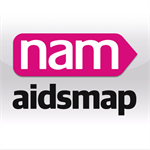
Advice on infant feeding has been updated in the 2018 guidelines to address the uncertainties surrounding HIV transmission through breast milk when viral load is undetectable on antiretroviral treatment.
“The undetectable=untransmissable (U=U) statement applies only to sexual transmission, and we currently lack data to apply this to breastfeeding,” the guidelines state. Nevertheless, the guidelines also recognise that some women on antiretroviral treatment will choose to breastfeed.
“Women who are virologically suppressed on cART with good adherence and who choose to breastfeed should be supported to do so, but should be informed about the low risk of transmission of HIV through breastfeeding in this situation and the requirement for extra maternal and infant clinical monitoring.
“When a woman decides to breastfeed, she and her infant should be reviewed monthly in clinic for HIV RNA viral load testing during and for 2 months after stopping breastfeeding.”
They should be supported in their decision, if they fulfil the following criteria:
- A fully suppressed HIV viral load (for as long a period as possible, but certainly during the last trimester of pregnancy)
- A good adherence history
- Strong engagement with the perinatal multidisciplinary team
- Prepared to attend for monthly clinic review and blood HIV viral load tests for themselves and their infant while breastfeeding and for 2 months after stopping.
Maternal ART (rather than infant pre-exposure prophylaxis (PrEP)) is advised to minimise HIV transmission through breastfeeding and safeguard the woman’s health.
BHIVA continues to recommend formula feeding as the safest way for a mother with HIV to feed her baby, recognising that it may come at an emotional cost to some mothers.
The guidelines also emphasise the importance of considering the financial costs of formula feeding for women, especially women with an irregular immigration status and no recourse to public funds, and women on low incomes.
“The provision of free formula milk, and the appropriate equipment to use it, alleviates any financial burden attached to this key prevention tool. This ensures that women can make decisions on how to feed their infant without being influenced by cost.”
“We advise discussing infant feeding intentions early in pregnancy so that appropriate information and support can be provided.”
